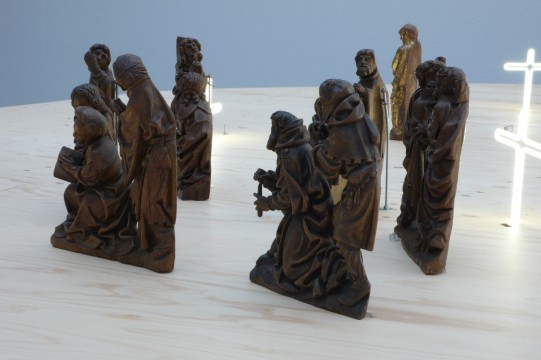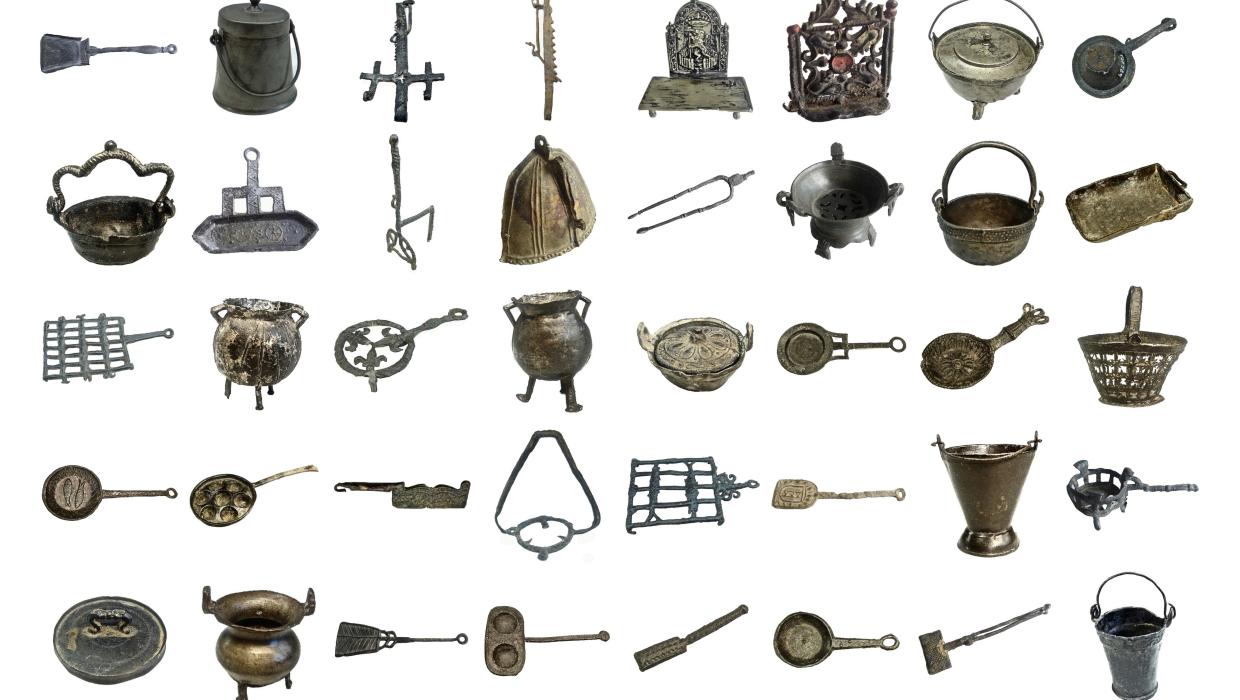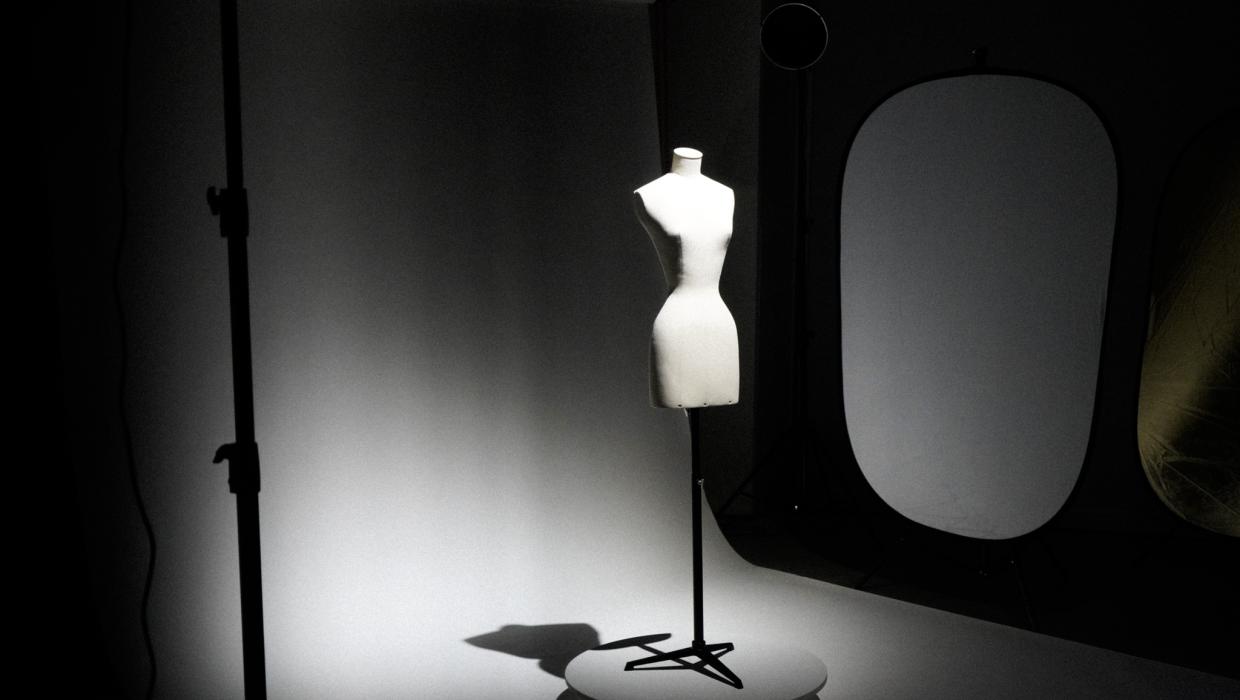

Sarkis - 'Landscape Forever'
Museum Boijmans Van Beuningen commissioned Paris-based artist Sarkis to install the exhibition of late Gothic polychromed sculptures from the Schoufour-Martin collection in combination with an installation of his own work.

The word ‘Kriegsschatz' (Spoils of War) appears frequently in his works and titles. He has always shown a great interest in art works that have been stolen or displaced. The sculptures from the collection of Jacques Schoufour and Ingeborg Martin were torn from their original settings within altarpieces and retables during the iconoclastic attacks of the 16th century and the French Revolution. Sarkis’ installation ‘Landscape for Ever’ is an island that brings the ‘displaced’ medieval sculptures together in a new grouping for the first time.














Sarkis has created many installations incorporating works from museum collections. In each case he absorbs himself in the origins and nature of other artists’ works and the spaces in which they are presented. He has said: ‘What interests me is how I am going to speak in this history-laden space and how our two histories – mine and it’s own – will come together and produce an image’. To achieve this he has employed a broad range of materials such as stained glass, neon letters, paint and rough wooden constructions. In this way he creates a link not only between the present and the past, but also between the works of art, the viewer and the environment.

Other works by Sarkis were displayed in the gallery adjacent to the exhibition, including the installation which he originally made for a chapel in the church of San Luigi dei Francesi in Rome. There it was shown amidst three paintings by Caravaggio and as series of stained glass windows by Sarkis.
The exhibition was made possible thanks to a contribution from Stichting Museum Boijmans Van Beuningen.



